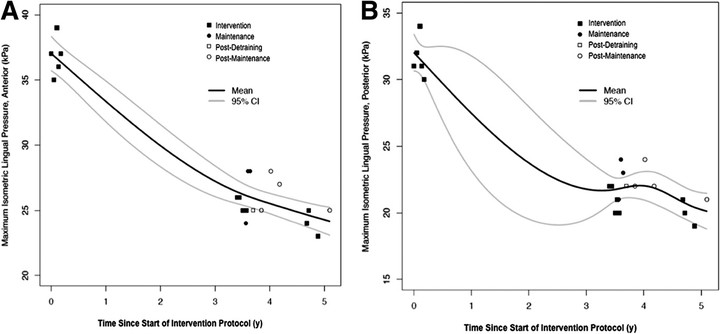The effects of lingual intervention in a patient with inclusion body myositis and Sjögren's syndrome: a longitudinal case study

Abstract
OBJECTIVE: To report the 5-year course of a patient’s swallowing disorder in the context of progressive neuromuscular disease and the effectiveness of a lingual strengthening treatment program. DESIGN: This is a case report that describes a lingual treatment protocol that was repeated 3 times over a 5-year period with and without maintenance periods. SETTING: The study was completed in 2 settings-an outpatient swallowing clinic at an acute care hospital and the patient’s home. PARTICIPANT: The subject was a 77-year-old woman who was diagnosed with inclusion body myositis and Sjögren’s syndrome. INTERVENTION: The patient participated in an intensive 8-week lingual strengthening protocol 3 times (at years 1, 4, and 5) and a subsequent maintenance program twice (at years 4 and 5). MAIN OUTCOME MEASURES: Three outcome measures were collected during the study: (1) lingual manometric pressures at the anterior and posterior tongue, measured by using a lingual manometric device, (2) airway invasion measured by using an 8-point Penetration-Aspiration Scale, and (3) clearance of the bolus measured by using a 3-point residue scale. RESULTS: Isometric lingual strengthening was effective in maintaining posterior tongue lingual pressure and Penetration-Aspiration Scale scores during the treatment periods. Residue scale scores did not significantly change during treatment. CONCLUSIONS: We conclude that, in this patient, lingual strengthening slowed the progression of disease-related lingual strength loss and extended functional swallowing performance. Thus, this type of intervention may hold promise as an effective swallowing treatment option for patients with neurodegenerative inflammatory diseases such as inclusion body myositis and Sjögren’s syndrome.